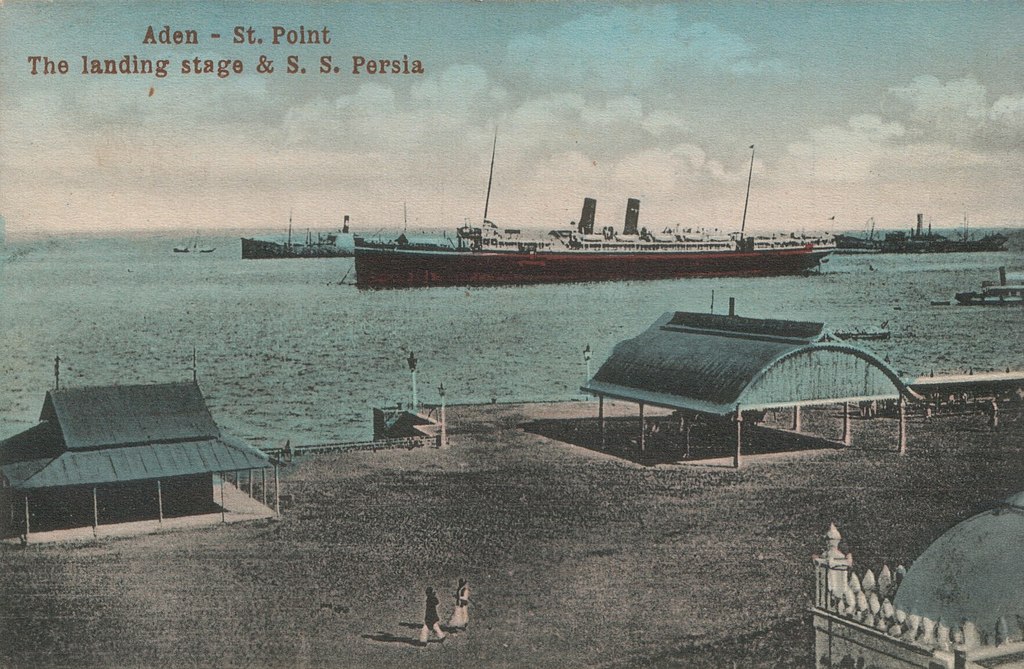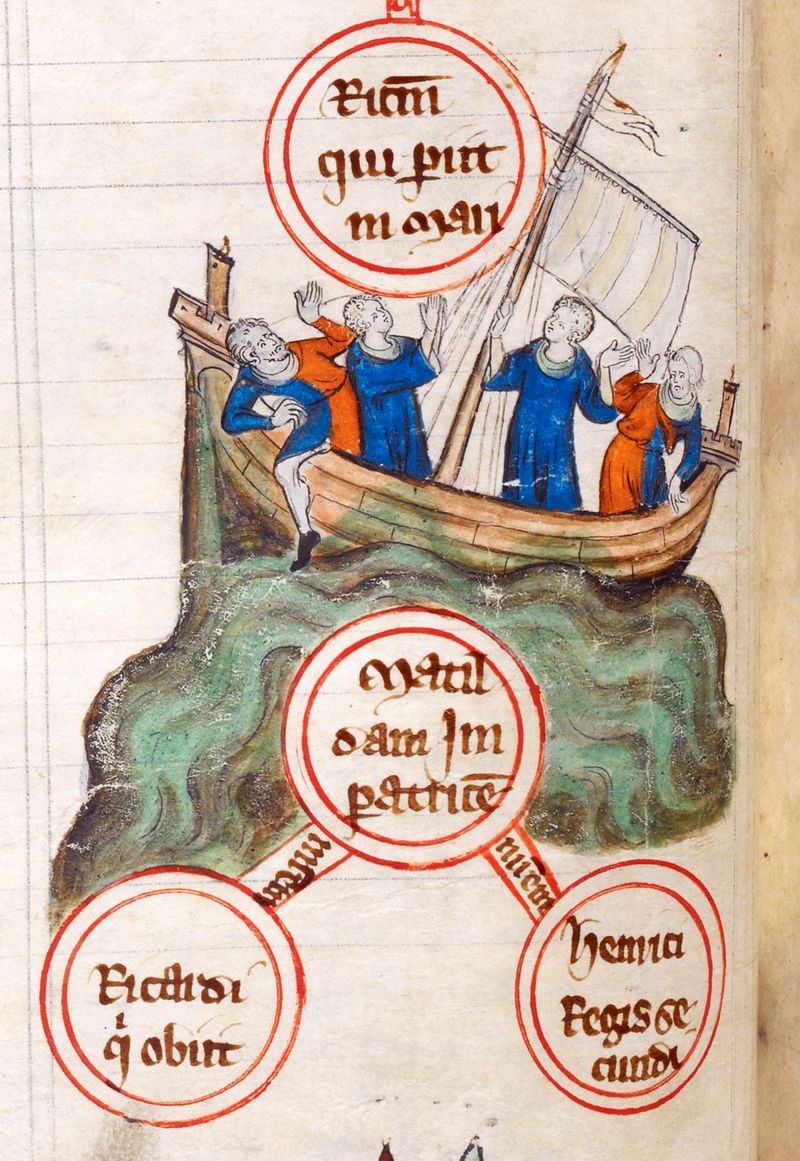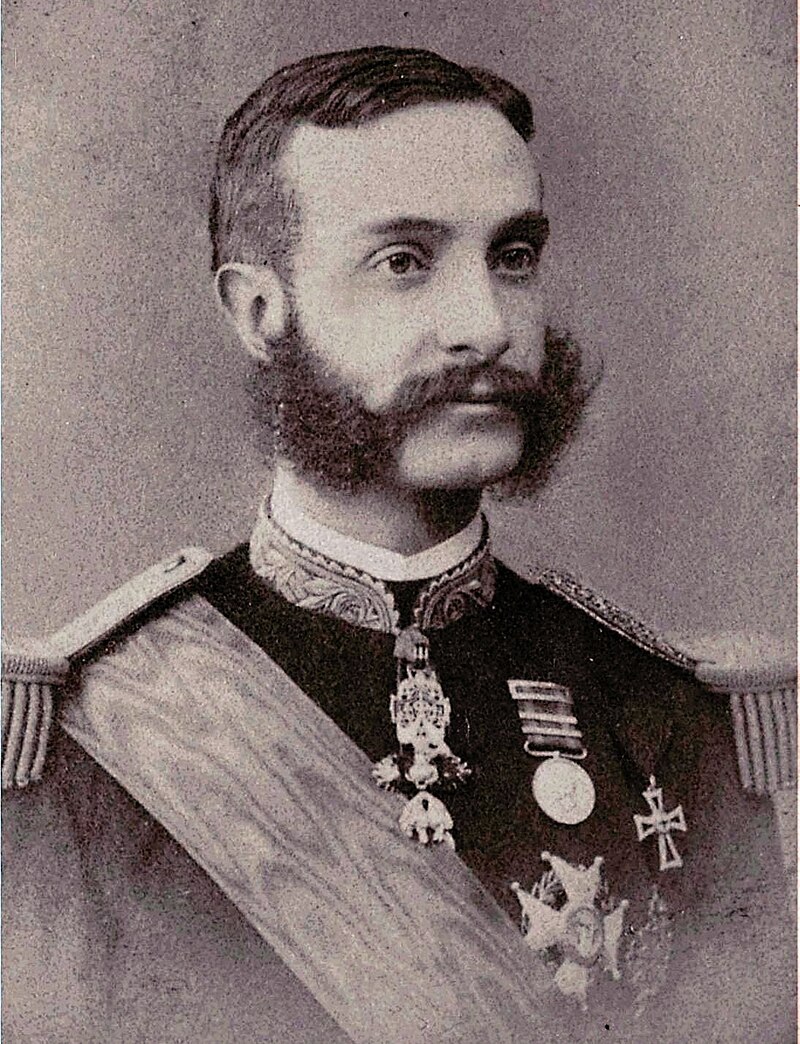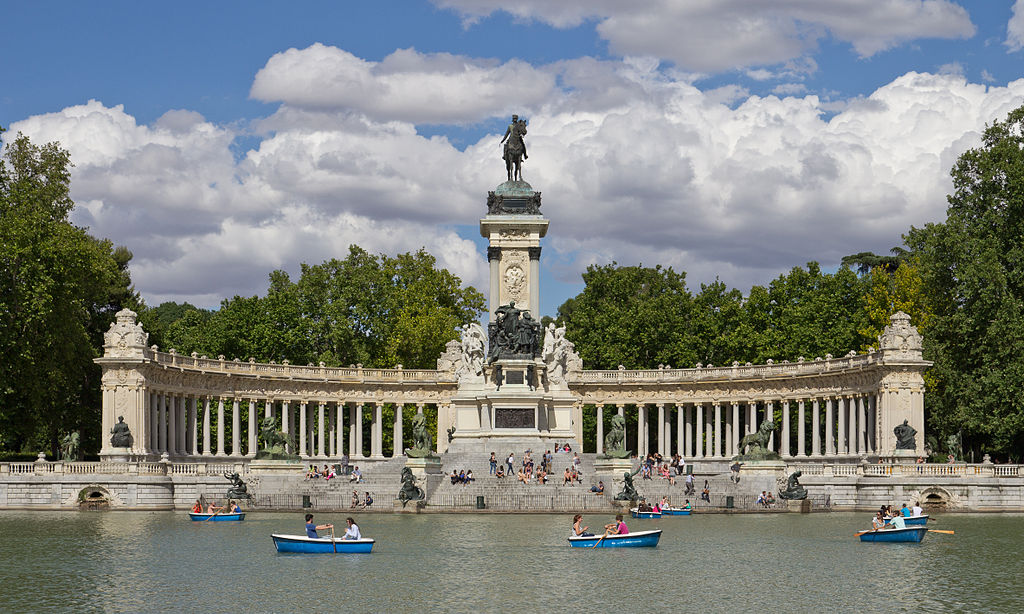by Susan Flantzer © Unofficial Royalty 2015

King George I of Great Britain; Credit – Wikipedia
His Highness Duke Georg Ludwig of Brunswick-Lüneburg was born on May 28, 1660, at Leineschloss in Hanover, now in Lower Saxony, Germany. He was the eldest of the seven children of Ernst August, Elector of Hanover, Duke of Brunswick-Lüneburg and Sophia of the Palatinate (commonly referred to as Electress Sophia of Hanover). Sophia’s mother was Elizabeth Stuart, the second child and eldest daughter of King James VI of Scotland/King James I of England. At the time of his birth, it was expected that Georg Ludwig would succeed to his father’s titles. However, his destiny changed when the British House of Stuart failed to provide a legitimate Protestant heir.
George had five brothers and one sister:
- Friedrich August of Brunswick-Lüneburg (1661–90), Major General in the Imperial Army of the Holy Roman Empire, died in action during the Great Turkish War, unmarried
- Maximilian Wilhelm of Brunswick-Lüneburg (1666–1726), Field Marshal in the Imperial Army of the Holy Roman Empire, unmarried
- Sophia Charlotte (1668–1705), married Friedrich I, King in Prussia, had issue
- Karl Philip of Brunswick-Lüneburg (1669–90), Colonel in the Imperial Army of the Holy Roman Empire, died in action during the Great Turkish War, unmarried
- Christian Heinrich of Brunswick-Lüneburg (1671–1703) Lieutenant General in the Imperial Army of the Holy Roman Empire, drowned in the Danube River during the War of Spanish Succession
- Ernst August of Brunswick-Lüneburg, Duke of York and Albany (1674–1728), became Prince-Bishop of Osnabrück as Ernst Augustus II

George in 1680; Credit – Wikipedia
George’s mother had an unhappy childhood and took much care in ensuring that her children had a happy home and a good education. George loved to ride, hunt, and participate in military exercises. In December 1680, George made a three-month visit to his future kingdom of Great Britain and rumors were flying that he would become the husband of his second cousin Princess Anne, the future Queen Anne, whom he later succeeded.
In 1675, George first saw military service. He was involved in the Dutch and Turkish wars and exhibited distinguished service at the Battle of Neerwinden. During the War of the Spanish Succession, George commanded the Imperial Army of the Holy Roman Empire on the Upper Rhine.
When George returned home after his three-month visit to Great Britain, his father chose Princess Sophia Dorothea of Celle as his son’s bride. The bride-to-be was the only child of Georg Wilhelm, Duke of Brunswick-Lüneburg and his long-time mistress, Eleonore d’Esmier d’Olbreuse. Sophia Dorothea and George were first cousins as their fathers were brothers. The marriage ensured an income from Celle of 100,000 thalers a year and the eventual unification of Hanover and Celle. At first, George’s mother was against the marriage because of Sophia Dorothea’s non-royal mother. However, the financial and political advantages of the marriage eventually swayed her to agree to the match. On November 22, 1682, in Celle, 16-year-old Sophia Dorothea married 22-year-old George.
The couple had two children:
- King George II of Great Britain (1683 – 1760), married Caroline of Ansbach, had issue
- Sophia Dorothea of Hanover (1687 – 1757), married Friedrich Wilhelm, Margrave of Brandenburg (later King Friedrich Wilhelm I in Prussia), had issue

Sophia Dorothea with her two children; Credit – Wikipedia
The marriage was happy at first, but soon both George and Sophia Dorothea found affection elsewhere. George fell in love with one of his mother’s ladies-in-waiting, Melusine von der Schulenburg. Sophia Dorothea fell in love with a Swedish Count, Philip Christoph von Königsmarck, an officer in the Hanoverian army. Despite warnings from her mother and friends, Sophia Dorothea and her lover wrote letters to each other, met secretly, and planned to escape Hanover together. On the morning of July 2, 1694, after a meeting with Sophia Dorothea, von Königsmarck disappeared from Leineschloss Castle and was never seen again. It was widely believed that George ordered von Königsmarck’s death. There is some speculation that the letters were forgeries, and the question of Sophia Dorothea’s guilt is still debated.
On December 28, 1694, a tribunal of judges and Lutheran Church officials declared the marriage of George and Sophia Dorothea dissolved on the grounds of Sophia Dorothea’s desertion. George was not satisfied with punishing his former wife with just a marriage dissolution. He had his 27-year-old former wife imprisoned in the Castle of Ahlden until she died 32 years later. Sophia Dorothea was never allowed to see her children again. Because her son George resembled his mother, his father despised him, the beginning of the father-son problems that plagued the Hanovers for four generations.
George’s father died on January 23, 1698, and George succeeded him as the Elector of Hanover and the Duke of Brunswick-Lüneburg. George’s court encouraged culture and learning and among those who frequented his court were the mathematician and philosopher Gottfried Leibniz and the composer George Frederick Handel. Handel later settled in England, and in 1727 wrote four coronation anthems for the coronation of King George II. One of the anthems, Zadok the Priest, has been played at every British coronation since then.

George as Elector of Hanover, 1707; Credit – Wikipedia
On July 30, 1700, a death occurred in the British Royal Family that would drastically affect George’s life. Less than a week after his 11th birthday, Prince William, Duke of Gloucester died. William’s mother, the future Queen Anne, had 17 pregnancies and tragically only three of the pregnancies resulted in children who lived longer than a few days. The promise of the Stuart succession had been with Anne’s only surviving child William. William’s death caused a succession crisis as his mother was the only person remaining in the Protestant line to the throne established by the Bill of Rights of 1689. This caused Parliament to enact the 1701 Act of Settlement which made George’s mother Sophia of Hanover, a granddaughter of King James I and the nearest Protestant in the line of succession, heiress presumptive to the British throne. The British throne would go to Sophia and her Protestant heirs if King William III or Princess Anne, the sister of William III’s deceased wife and co-ruler Queen Mary II, had no children. The Act of Settlement bypassed 56 Catholics who had a better hereditary claim to the throne than Sophia.
George was created a Knight of the Garter in August of 1701. On March 8, 1702, King William III died and the sister of his deceased wife and co-ruler Queen Mary II became Queen Anne. In 1705, George became a British citizen via the Sophia Naturalization Act. Sophia died on June 8, 1714, at the age of 83. She narrowly missed becoming queen, having died two months before Queen Anne. Queen Anne died on August 1, 1714, and George became King George I of Great Britain, the first of the Hanover monarchs.
George made his state entry into London on September 20, 1714, accompanied by his mistress, Melusine von der Schulenburg, who was nicknamed “the Maypole” by the English because of her tall thin appearance. Melusine became a naturalized British citizen in 1716 and in the same year was created Baroness of Dundalk, Countess, Marchioness of Dungannon, and Duchess of Munster. In 1719, she was further created Baroness of Glastonbury and Somerset, Countess of Feversham, and Duchess of Kendal.

Melusine von der Schulenburg; Credit – Wikipedia
At George’s request, Holy Roman Emperor Karl VI created Melusine, Princess of Eberstein. This gives some credence to the belief that George and Melusine had secretly married. British Prime Minister Sir Robert Walpole said of Melusine, “She was as much Queen of England as ever any was.” Melusine and George had three children, two were officially recognized as the children of Melusine’s sister Gertrud and her husband Friedrich Achaz von der Schulenburg, and one was officially recognized as the child of her other sister Sophia Juliane von Oeynhausen.
- Anna Luise Sophie von der Schulenburg (1692 – 1773), married Ernst August Philipp von dem Bussche zu Ippenburg, no children, divorced
- Petronilla Melusina von der Schulenburg (1693 – 1778), married Philip Stanhope, 4th Earl of Chesterfield, no children
- Margarete Gertrud von der Schulenburg (1701 – 1726), married Albrecht Wolfgang, Count of Schaumburg-Lippe, had two sons
Less than a year after George’s accession, the first uprising of the Jacobites, who supported the Catholic Stuart line, broke out. The rebels aimed to overthrow George and replace him with Queen Anne’s Catholic half-brother James Francis Edward Stuart (the Old Pretender) as King James III. The uprising culminated in the Battle of Preston on November 9-14, 1715. The Jacobites won the first day of the battle, but government reinforcements arrived the next day and the Jacobites eventually surrendered. Many Jacobite prisoners were executed or sent to British colonies as slaves, and numerous Scottish noble families lost their lands.
Even though he was the King of Great Britain, George never lost sight that he was also the Elector of Hanover. He lived mainly in Great Britain but did make several visits to Hanover and spent about 20% of his reign there. George remained Lutheran but was the head of the Church of England (Anglican Church) and the Church of Scotland (Presbyterian Church). Although George spoke four languages fairly well (Latin, French, Italian, and English) in addition to his native German, the notion persists that he only spoke German and hardly understood a word of English.
George was happy to leave the affairs of Great Britain in the hands of his ministers. In choosing his ministers from the Whig Party, George laid the foundation for the 50-year dominance of the Whigs. Cabinet government began during King George I’s reign and Robert Walpole, the head of the majority party in the House of Commons, became the first British Prime Minister.

King George I; Credit – Wikipedia
On June 3, 1727, King George I set out for another visit to Hanover. During the journey, George became ill and lost consciousness. It was noticed that his face had become distorted and his right hand hung limply at his side, a sign that he had suffered a stroke. The courtiers decided to continue with the journey to Hanover, where George died in the Prince-Bishop’s Palace in the Prince-Bishopric of Osnabrück, now in Lower Saxony, Germany, on June 11, 1727, at the age of 67. Following the instructions of George’s son, now King George II, George was buried in the chapel at Leineschloss in the Electorate of Hanover, now in Lower Saxony, Germany. He was the first British monarch since King Richard I in 1199 to be buried outside Britain. The castle and the chapel were severely damaged during World War II, and in 1957, King George I’s remains were re-interred at the Berggarten Mausoleum at Schloss Herrenhausen in Hanover, Germany, near his mother’s burial site.

Berggarten Mausoleum at Schloss Herrenhausen in Hanover, Germany; Photo Credit – Wikipedia
This article is the intellectual property of Unofficial Royalty and is NOT TO BE COPIED, EDITED, OR POSTED IN ANY FORM ON ANOTHER WEBSITE under any circumstances. It is permissible to use a link that directs to Unofficial Royalty.
House of Hanover Resources at Unofficial Royalty




































